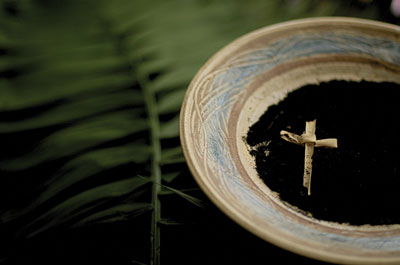
SUMMERVILLE—The Byzantine Catholic presence in South Carolina continues to expand with the beginning of a new Byzantine mission in Summerville.
The Byzantine Catholic Community of Summerville will hold its first Mass, also known as the Divine Liturgy, on Feb. 16 at 1:15 p.m. in the adoration chapel at St. Theresa the Little Flower Church.
The new community is a reality because of the dedicated work of Shawn and Arley Shorter, who moved to the Summerville area from Tennessee two years ago. The Shorters attended a Byzantine rite church there and were dismayed to discover there were no churches near Summerville or Charleston that offered the Divine Liturgy.
Mrs. Shorter said she grew up in the Byzantine rite in Ohio and her husband joined when they were married.
When they moved to the Charleston area, the Shorters started exploring ways to make the rite available here. They met Father Mark Shuey, administrator of Sts. Cyril and Methodius Byzantine Catholic Church in Cary, N.C. Father Shuey has been involved in forming Byzantine missions in other parts of the Carolinas for the Eparchy of St. Josaphat in Parma, Ohio, and said the Charleston/Summerville area was being considered. An eparchy is the Eastern rite equivalent of a diocese.
The couple agreed to help Father Shuey start a mission in Summerville. They asked Msgr. Edward Lofton, pastor of St. Theresa the Little Flower, if he would allow the new community to use space at his parish and he agreed.
Father Shuey will celebrate the first Divine Liturgy and then plan out the future schedule.
Mrs. Shorter said she has already heard from other Byzantine Catholics who live in the area and are excited about the new community. She hopes the Divine Liturgy will also attract people who normally attend the Roman rite but are interested in learning about the Byzantine style of worship.
Some key differnces between the Byzantine and Roman rites include that the celebrant faces the altar during most of the Divine Liturgy, and most of the service is sung or chanted. During Holy Communion, the host is dipped in the blood of Christ by the priest and placed on the recipient’s tongue.
“We have missed being able to worship in our tradition, and it is so rewarding for us to be able to help make the Byzantine rite available to people in this area,” Mrs. Shorter said. “We want the community to be a blessing not only to people who live here permanently, but to Byzantine Catholics who are visiting here.”
Mrs. Shorter said it is also special to be instrumental in starting a new Byzantine community because her grandparents were founding members of a Byzantine church in Bedford, Ohio.
The new community follows the Ukrainian rite of Byzantine worship and is led by the Eparchy of St. Josaphat in Parma.
The Parma eparchy leads two other Byzantine missions in the state: Holy Cross Eastern Catholic Mission at Transfiguration Church in Blythewood, and Dormition of the Mother of God Eastern Catholic Mission at St. Rafka Maronite Church in Greer.
Two other Byzantine communities in the state follow the Ruthenian rite of worship, which traces its roots to a region of Eastern Europe that includes parts of Slovakia, Hungary, Romania and the Ukraine. One of them is Blessed Basil Hopko Mission outside Conway, which was founded in 2009 and is the oldest Byzantine presence in the state. The other is the Byzantine Catholic Community of Fort Mill, which meets at St. Philip Neri Church. Both are led by the Byzantine Catholic Eparchy of Passaic, N.J.


